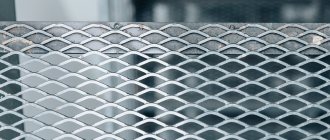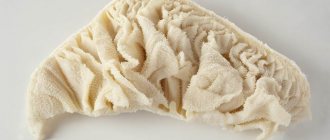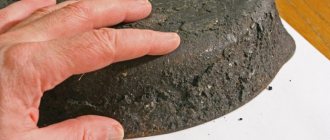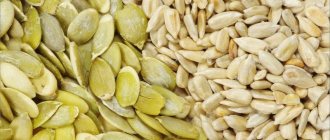Our grandmothers knew very well how to starch a shirt so that it would retain its freshness and shape longer. Nowadays, few people bother themselves with additional care for their clothes, but limit themselves to regular machine washing. But on especially special occasions, when everything must be perfect, starching is simply necessary.
Starching increases the wear resistance of things, preserves their appearance and shape
The use of starch products not only gives things a more elegant look, but also significantly extends their wear life. Starch protects fabric from abrasion and dirt. It traps dust and sweat and then effortlessly washes off with them. Shirts and blouses do not have to be rubbed hard or soaked for a long time in hot water with aggressive chemicals.
It is important to understand that clothes made from natural fabrics, when starched, to some extent lose their main advantages - breathability and hygroscopicity. Starch impregnation prevents natural ventilation and air access to the skin, which reduces the feeling of wearing comfort. Therefore, it is recommended to starch clothes not constantly, but from time to time.
It is not necessary to starch the item completely, it is enough to strengthen individual parts that should keep their shape well
To starch a shirt at home, some use ready-made store-bought solutions or sprays, but the simplest and most affordable remedy is homemade, made from potato starch. Rice and corn are weaker, and you will have to take 1.5 times more of them than potato.
Advantages
Starch penetrates into the pores of the fabric, making the product more rigid. Therefore, the shirt maintains a presentable appearance longer and does not wrinkle.
Other benefits of starching clothes:
- strength;
- white;
- Dirt-repellent barrier due to the suppression of a kind of film.
It is best to carry out the starching process only on shirts made of natural fabric. Products made from synthetic fabrics do not have a porous texture, so the process is useless.
The only negative is the lack of ventilation. Due to the formation of a film on the shirt, it stops allowing air to pass through, so starched items should be used only when necessary. Wearing such things every day is not advisable.
Advantages and disadvantages of starched clothes
Such things have a number of significant advantages:
- Starching reduces the rate of wear of fabric, since the substances used to treat clothing compact the fiber structure.
- Washing starched items is easy, since all the dirt is absorbed by the starch particles. Stains do not eat into the fabric, and the substance is washed off along with the dirt.
- Shirts become snow-white, and the yellowness disappears as the white starch thickens after ironing.
- As a rule, starched items do not wrinkle because the material becomes quite dense.
- The aesthetic side is complemented by the fact that things smell good and have a pleasant crunch.
The only drawback of processing things this way is that the shirts do not allow air to pass through well due to the starch layer. Therefore, it is not recommended to wear them to active parties; it is better to limit yourself to infrequent festive feasts.
You should not starch fitted shirts, as the body’s thermoregulation is disrupted due to insufficient air conductivity.
Preparing laundry
Before carrying out the starching procedure, it is necessary to wash the shirt. Washing is carried out in the usual way using powder and conditioner.
It is important to use the correct temperature conditions so as not to damage the product, and thereby extend its service life.
White items must be washed separately from colored items. Cotton white shirts need to be treated separately from synthetics and chiffon because they require pre-soaking and double rinsing.
After washing, the shirt should be inspected for any remaining stains; if any, they must be removed and re-processed in the machine.
If you starch a stain, it will sink deeper into the fibers and make it more difficult to remove.
Useful tips
Every housewife who wants to try to update something must learn a few simple rules. Recommendations from experienced housewives:
- Do not starch your underwear. It will not allow air to pass through;
- You should not process black and dark things. White streaks may remain on them;
- You can achieve a better effect by adding table salt to the solution;
- a heavily wrinkled shirt must be ironed before the process;
- treated items should not be kept in the cold;
- artificial materials are not processed, their fibers do not retain starch.
It is possible to preserve the newness of any item by starching. After the process, the item will not only look chic and get dirty less, but also last longer.
Preparation of the product
The degree of fixation and the final appearance of the shirt depend on the prepared solution.
The active formulation should be selected based on the type of fabric. Methods for preparing the solution:
- For cambric and chiffon shirts, use a product made from 1 tsp. starch per liter of water.
- A product made of natural fabric of medium or high density (for example, cotton) is treated with a solution of medium concentration - 1 tbsp. l. for 1 liter of water.
- It is better to starch collars and cuffs using the hard method. To do this, dilute 2 tbsp. l. starch in one liter of cold liquid.
It is also important to prepare the solution correctly. The result of the procedure depends on this.
To do this, the required amount of starch is diluted in a liter of warm water no higher than 20 degrees. If used hot, sticky lumps may form.
The second way to prepare the solution: dissolve the starch in a small amount of water, add 1 liter of boiling water and put on low heat. After 3 minutes, remove from heat and leave for 1 hour. Then used to starch shirts.
If lumps appear in the solution, they can be removed. It's easier to do this if you strain through a strainer.
Some interesting tips for using starch
- Shirts can be starched in the washing machine. To do this, diluted starch must be poured into the conditioner compartment, and other detergents must not be used in this cycle.
- To give the product a ceremonial glossy shade, you need to add melted stearin to the paste.
- Drying starched items in the cold is possible, but difficult; This will not give additional rigidity to the product.
- You can add a little salt to the paste to add shine to the products.
Starching a thing means making it much more attractive and presentable. No amount of washing or dry cleaning will provide such a bright effect. This procedure is quite economical, and most importantly, it allows you to preserve the appearance of the shirt longer.
The starched collar and cuffs look especially stylish and elegant. The fading popularity of this method of processing products is associated with the emergence of a large number of synthetic fabrics, but for high-quality natural shirts and blouses this is still an excellent and effective method.
Continuation of the topic: how to starch fabric
Procedure technology
If you follow the recommendations, the process of starching a shirt is not difficult. The procedure takes no more than an hour.
How to starch a shirt:
- The prepared solution is not sprayed on the shirt; it is dipped into a basin with paste.
- The laundry is kept in the viscous starch composition for 15 to 20 minutes, depending on what result is required. Men's shirt fabric is generally durable, so it will take 30 minutes.
- After the allotted time for the procedure, the shirt is taken out of the solution and dried on hangers, carefully straightening out the folds and creases. This should not be done near the battery or on the balcony. Overdried material is more difficult to iron.
You can also carry out the procedure in a washing machine. Simply add the required amount of starch to the conditioner compartment. No detergents should be used during this cycle.
In addition, it is important to know that the quality of such a procedure is lower. And also, experienced housewives do not recommend getting carried away in this way.
While drying, spray the product with plain water from a spray bottle.
To starch collars and cuffs, you will need to prepare a concentrated solution. After the procedure, they will acquire an ideal shape and rigidity, and will not quickly wrinkle or get very dirty.
How to starch certain areas of a shirt? First, the item is washed in a machine and all stains are removed. Then prepare a solution of 2 tbsp. l. starch per 1 liter of water, to which you need to add 15–20 grams of coarse salt and leave it for 1.5–2 hours.
How to starch a shirt collar:
- The cuffs and collar are lowered into the prepared solution one by one. There is no need to squeeze out immediately; the remaining water should drain off on its own.
- The mixture can also be applied to the collar and cuffs using a soft sponge so that the liquid is well absorbed.
- They are then dried, but the fabric should remain slightly damp.
After this treatment, the product will look like new and keep its shape after several washes in an automatic washing machine.
Process sequence
Starching a shirt or a certain element of it is not difficult even for a beginner. But before you get started, you need to familiarize yourself with some important points.
Instructions for processing shirts:
- first you need to decide on a method that suits this or that thing;
- prepare the solution according to the recipe;
- to starch a shirt completely, immerse it completely in a starch solution for 30 minutes;
- after treatment with the solution, the product must be straightened and hung in the air;
- Before ironing, the starched item must be sprayed with water from a spray bottle;
- it is strictly forbidden to dry shirts on the radiator;
- stearin diluted in a starch solution will give the shirt a more radiant and solemn look;
- the process can be performed using a washing machine. To do this, you need to pour the starch solution into the conditioner compartment. In this case, only those things that need to be processed need to be loaded into the drum;
- The shirt should be ironed slightly damp; a dry shirt is difficult to iron.
If you follow the sequence of the process, even dry cleaning will be jealous of the result. But in the process you need to take into account that some parts of the shirt are processed separately.
How to starch a shirt collar and cuffs:
- Before processing, parts must be prepared. To do this, you need to moisten a napkin with hydrogen peroxide and wipe them.
- Prepare a solution for the hard method.
- Immerse the shirt pieces one by one in the solution.
- Repeat the procedure 3-4 times.
- Hang the shirt to dry on hangers.
- Without waiting for complete drying, iron the elements several times.
You can also apply the solution with a brush or sponge. It is advisable to wash heavily soiled areas before treatment. In the process of preparing the solution, you may encounter a problem such as incomplete dissolution of starch. In this case, it is recommended to strain it through cheesecloth.
How to prepare a shirt for starching
Before starting work, it is necessary to wash and remove contaminated stains from the shirt, since yellowness or dirt may remain and spoil the entire appearance of the finished product. It is recommended to pay attention to the following points:
- It is better to wash cotton items in hot water, after soaking them for a while. After washing, apply double rinse.
- Light fabrics do not require pre-soaking, and when washing, you can select a low mode. You can rinse such products by hand.
Alternative Methods
Other recipes can be used to stiffen a shirt collar. The effect will be the same in each case.
Sugar
This option helps protect your shirt from insects. For this recipe you will need to do the following:
- Take a tablespoon of starch and 3 - sugar, a liter of water.
- Mix a glass of water with starch.
- Bring sugar and remaining water to a boil.
- Mix both solutions and bring to thickness.
Dip the shirt into the resulting mixture and leave for at least 20 minutes. There is also another recipe used for starching collars. In this case, you will need to mix 200 grams of sugar and 100 milliliters of water. Then the composition must be put on fire and cooked until the liquid acquires a dark shade. After this, the shirt must be placed in the mixture for 15 minutes.
Gelatin
To stabilize your shirt collar, you will need:
- Mix 200 milliliters of water and a teaspoon of gelatin.
- Wait until the gelatin swells.
- Heat the mixture over the fire without bringing it to a boil.
- Immerse the collar of the shirt in the mixture for 10 minutes, then pull it out and leave to dry.
The following method is also used at home:
- Dissolve a packet of gelatin and a tablespoon of salt in 500 milliliters of water.
- The gelatin solution is kept in a water bath.
- Shortly before boiling, the solution is removed from the heat.
- Place the prepared shirt in the gelatin solution for 15 minutes.
Drying and ironing of clothes is carried out according to the previously given recommendations.
Errors you need to know about
- Dilute starch only with cold water. When warm, it clumps into sticky lumps.
- Dilute starch concentrate only in water at room temperature, no higher than 20 degrees.
- Don't overdo the dosage. Prepare the concentrate correctly. If you starch things in too thick a solution, you risk ruining the product.
- Iron starched laundry slightly damp. If the item is dry, immerse it in cool water again, rinse lightly and dry again.
Try starching your bed linen a little. You might like the new feeling of cleanliness.
How do you like the article?
Why else do we starch shirts?
- A stiff collar and cuffs will give the item a more elegant, formal look.
- If you take care of an everyday item in this way, it will wear out more slowly (starch compacts the texture of the fibers, so they do not rub and tear so quickly).
- Starched fabrics wrinkle less often.
- White things look even whiter when treated regularly.
- Treated collars are washed faster and with better quality, since the dirt “sits” not on the fabric itself, but on the starch “layer”.
But! A starched shirt immediately becomes denser, almost without allowing air to pass through. So wearing one in the summer, in the hottest sunshine, is not recommended.
Grandma teaches
Our grandmothers and mothers (if they are over 60 years old) still probably remember the times when almost everything in the house was starched - bed linen, pajamas, knitted napkins, handkerchiefs. Each wash traditionally ended with this procedure. So if you have practical questions, you can contact older relatives and neighbors - you will certainly not be left unanswered.
For example, this is what my grandmothers I know recommend doing:
- starch underwear (say, men's family briefs) - the fabric will breathe worse, and this is not hygienic;
- also can’t starch synthetics - its fibers won’t be able to hold the solution;
- need to starch white, or at least light-colored items - stains may remain on dark and black ones (but if you have already starched them, you only need to iron them from the inside out);
- if you add a small spoonful of salt , things will turn out slightly shiny (salt can be replaced with a few drops of melted stearin);
- if you treat the collar with hydrogen peroxide , you will be able to protect it from the appearance of yellow spots;
- It is better to dry starched items outside (but in the warm season), or indoors (in the attic, balcony), but not in the cold .










